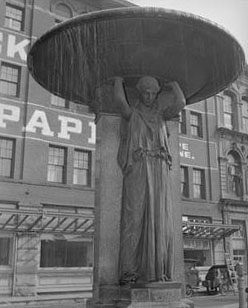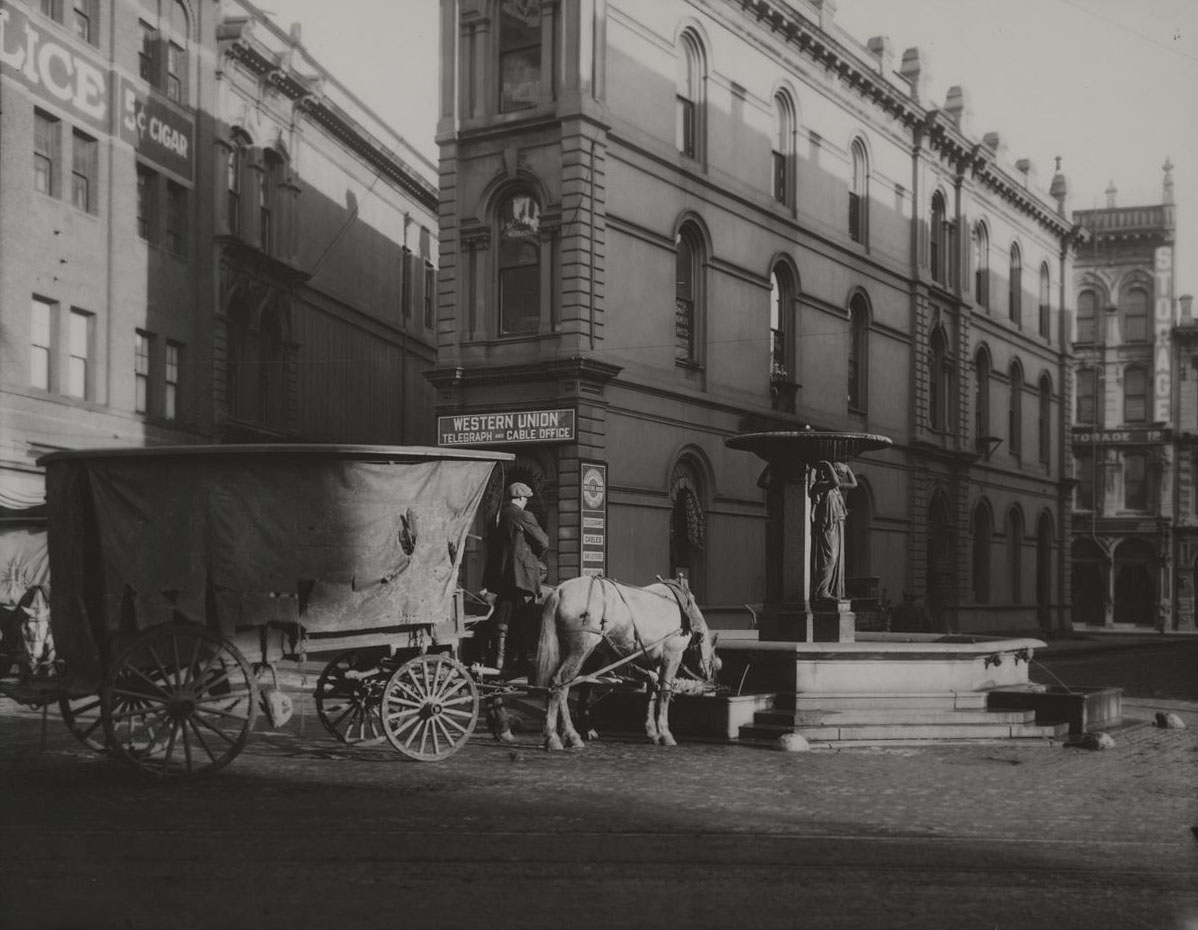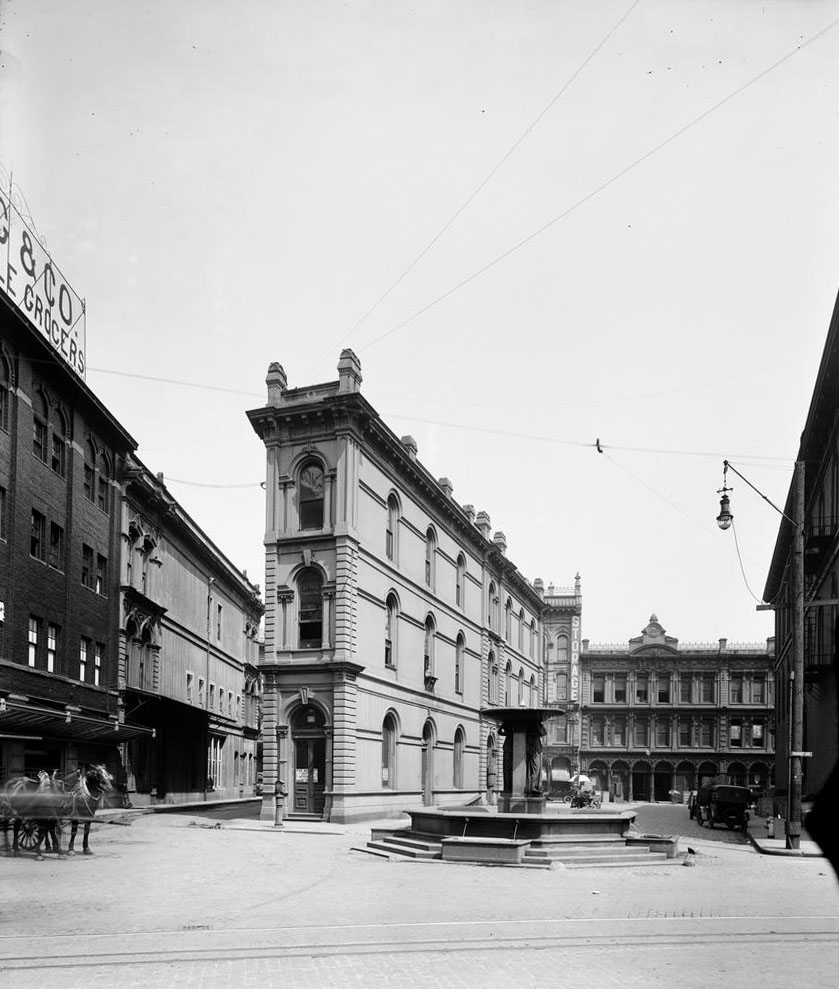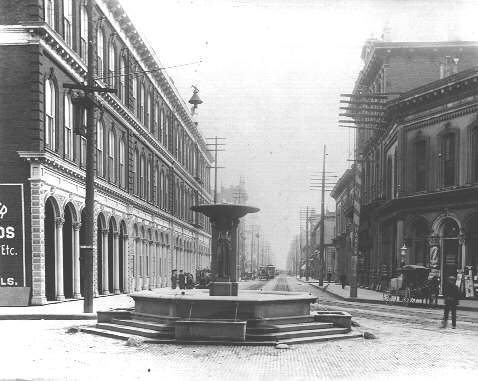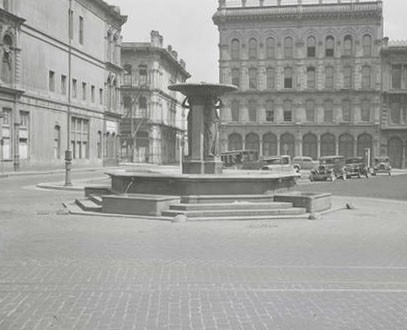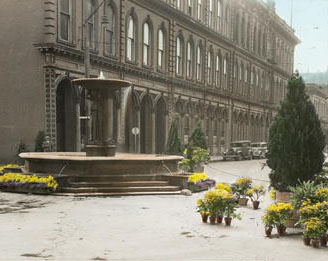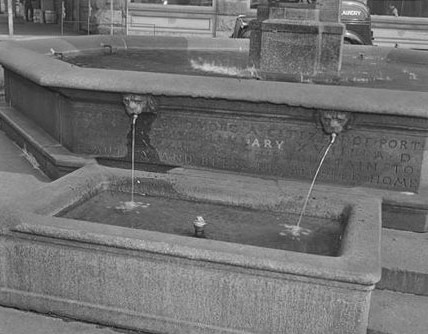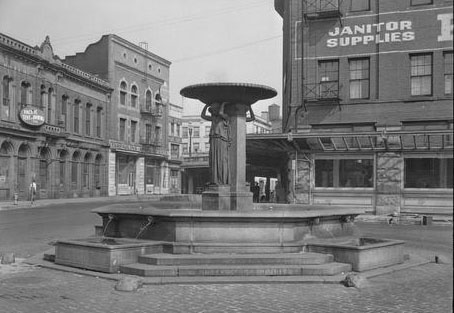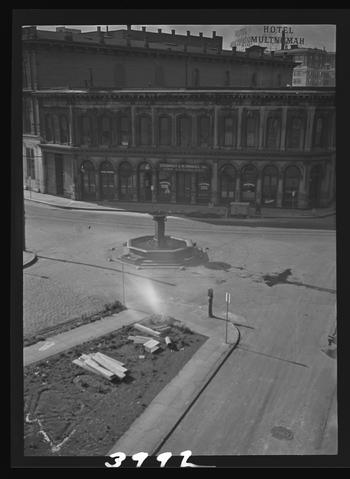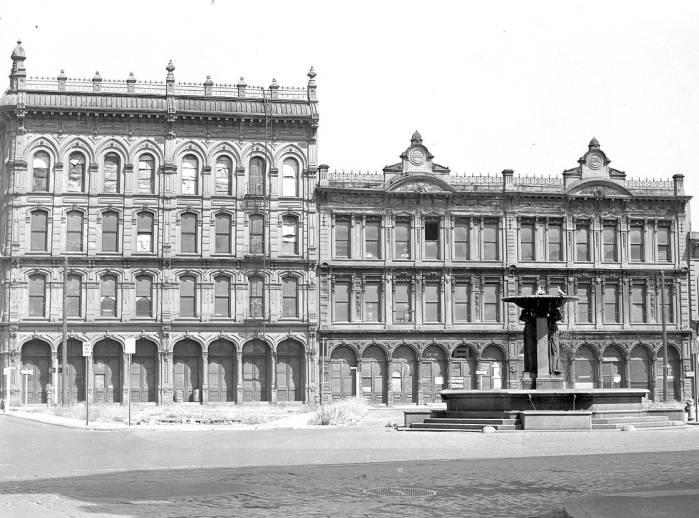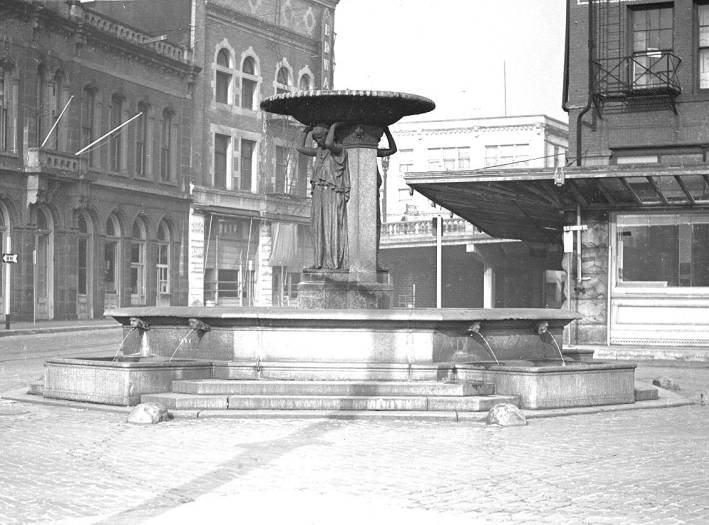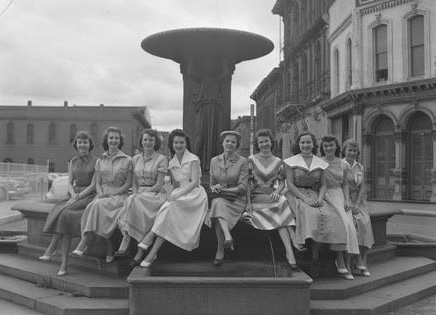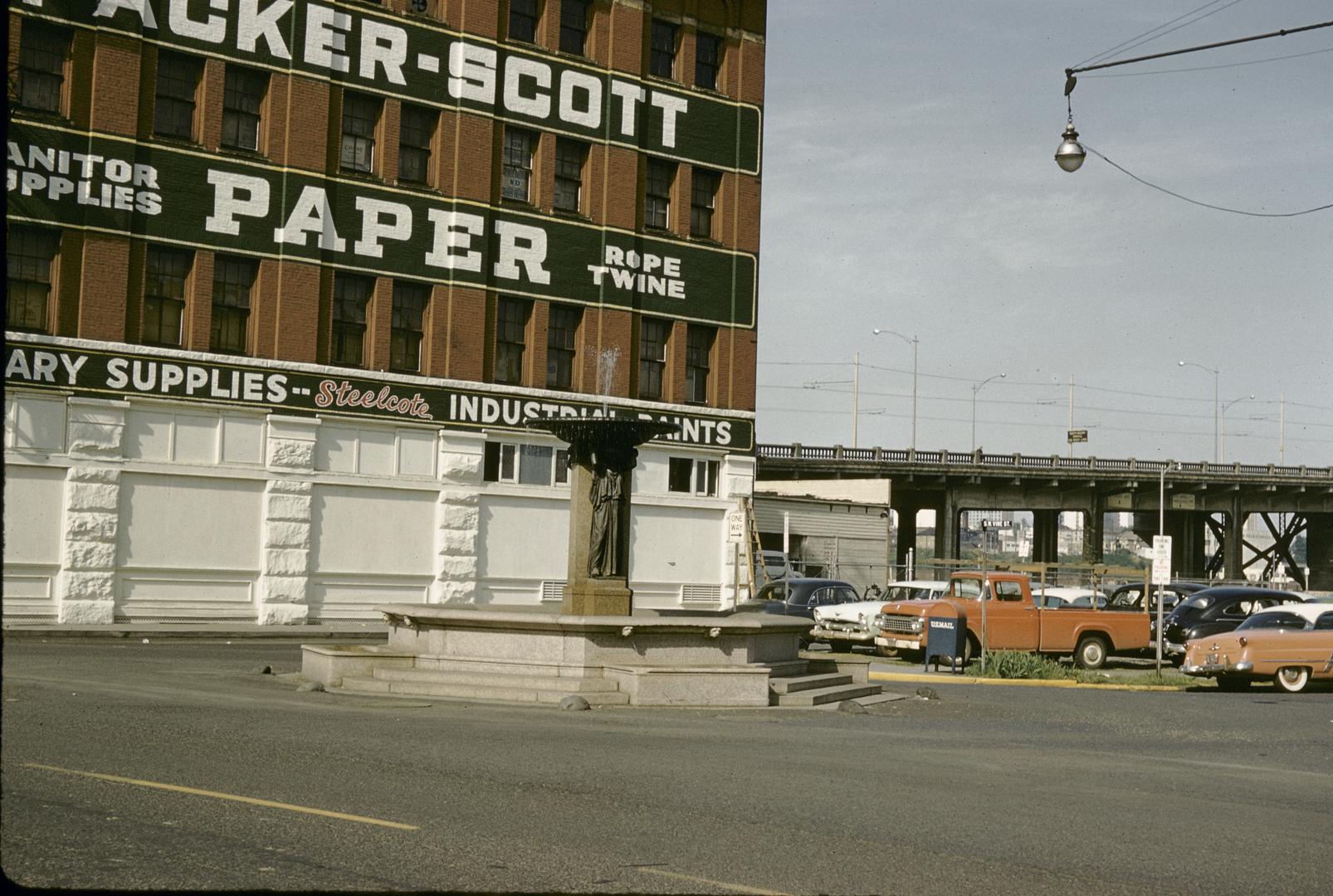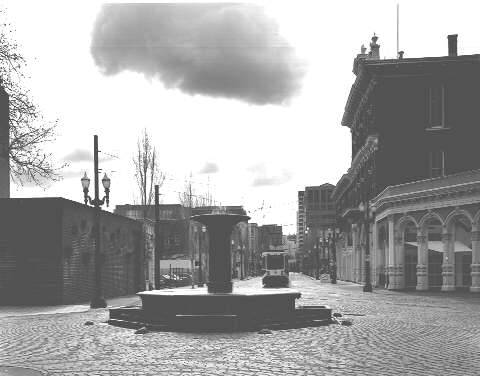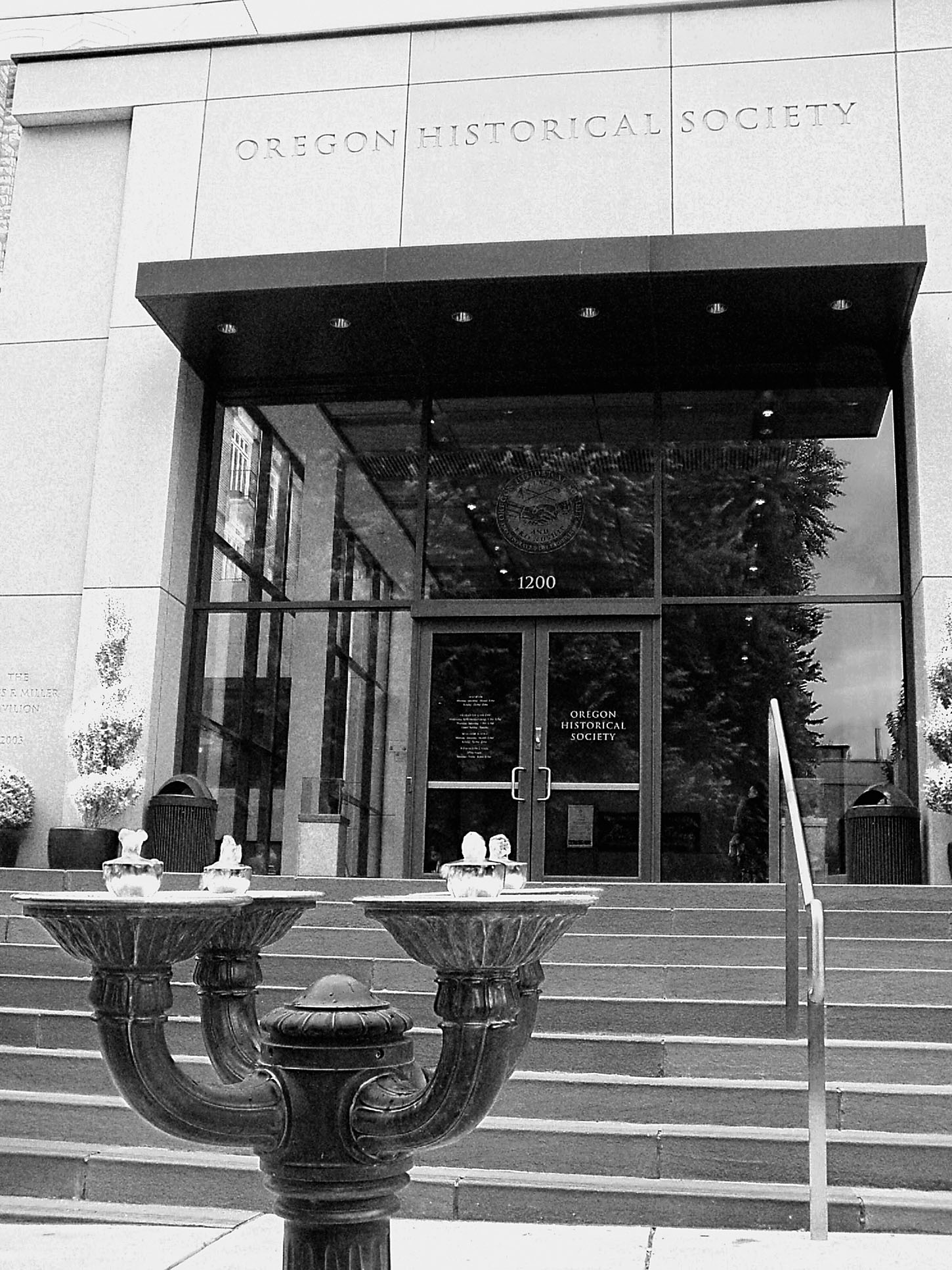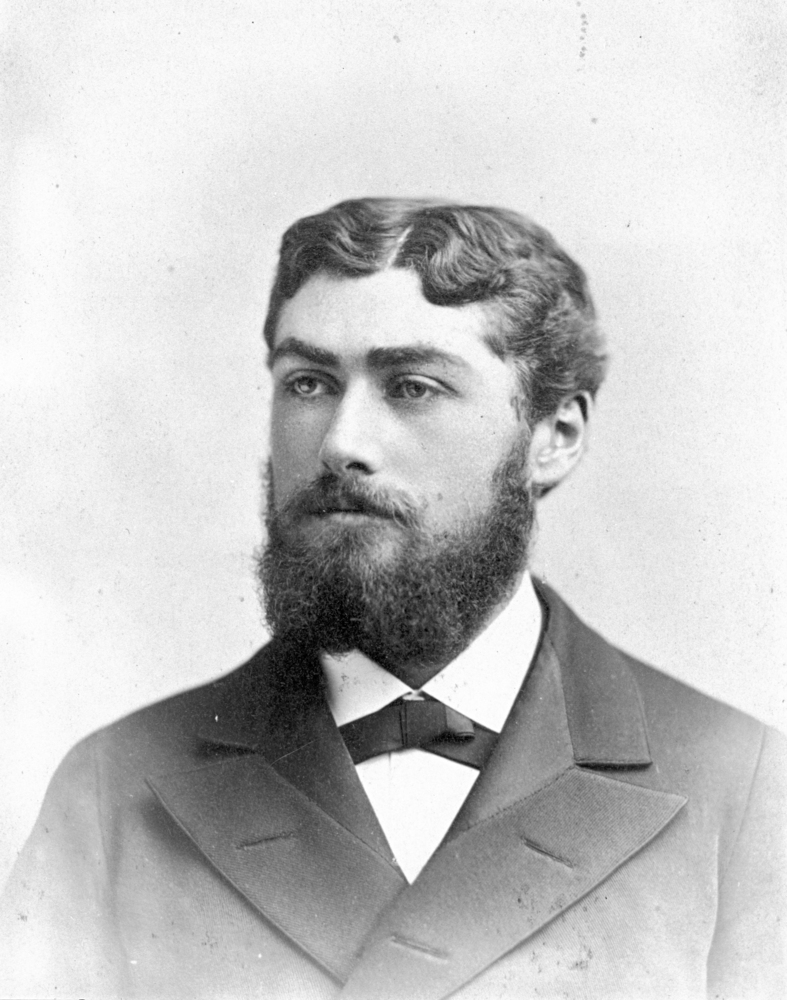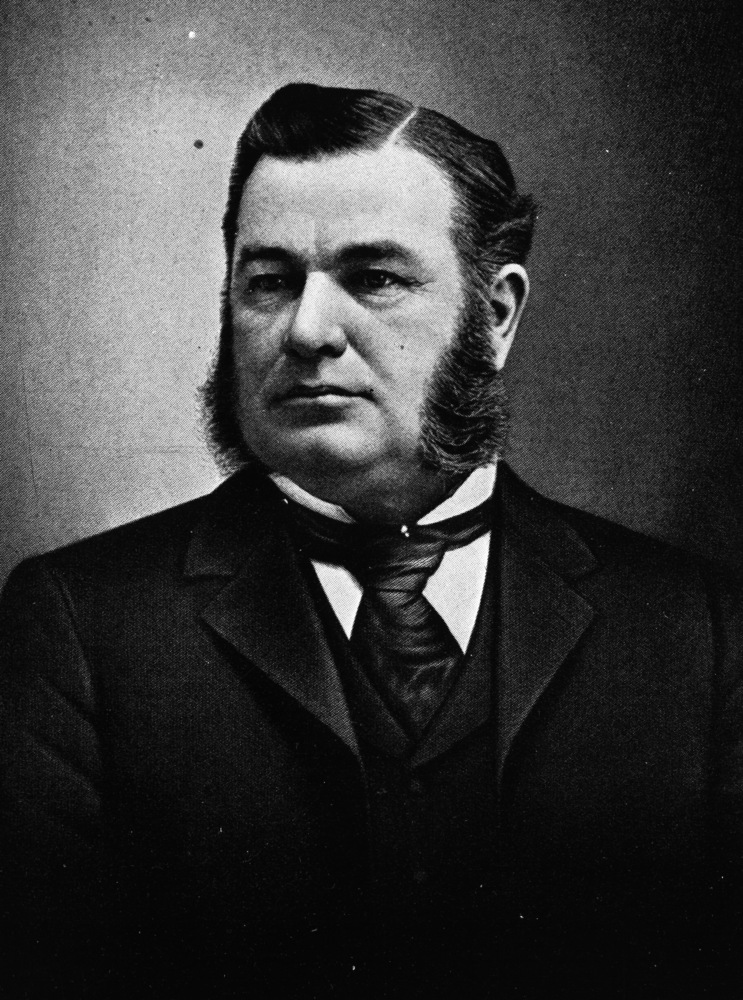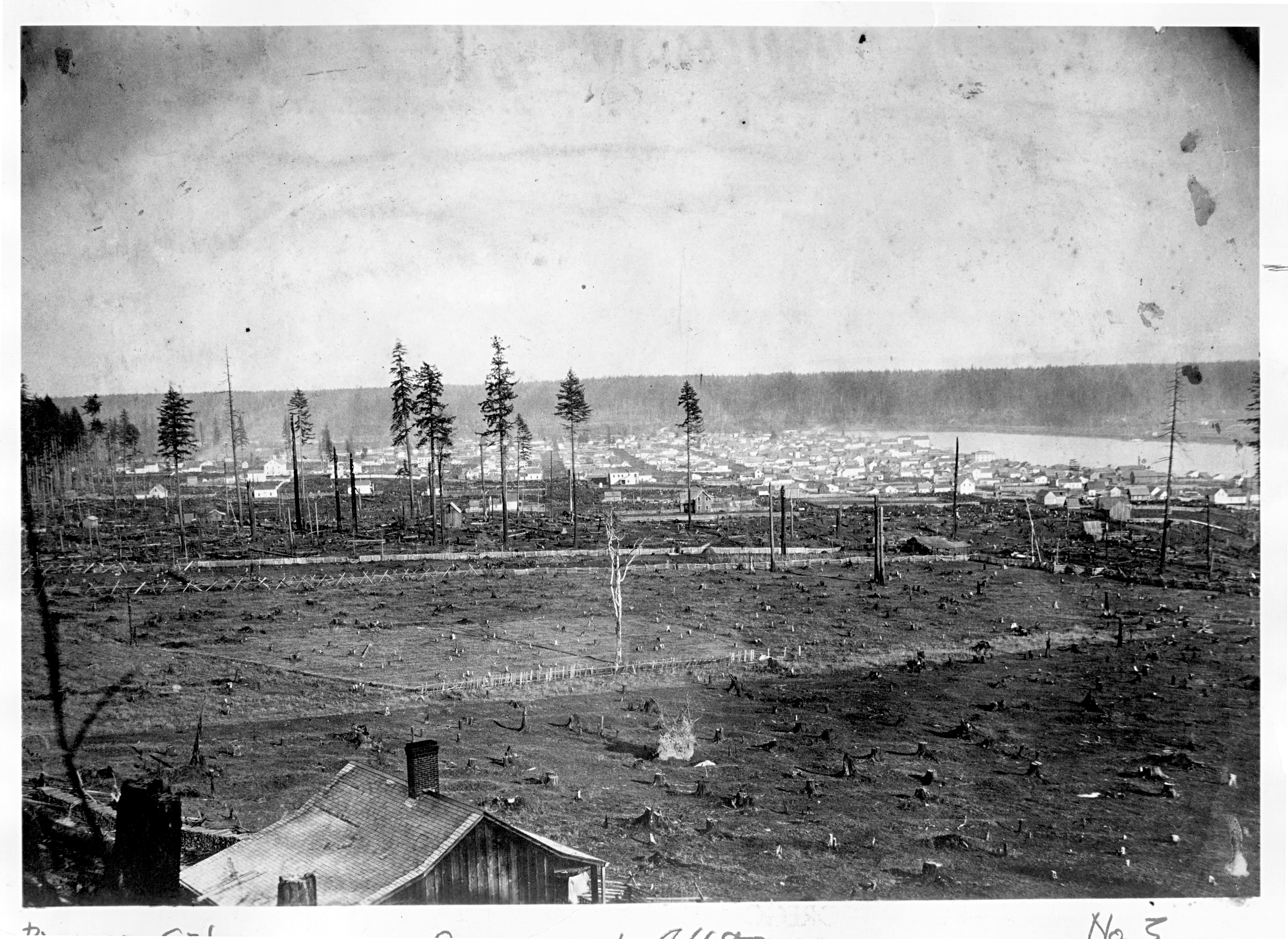The Skidmore Fountain, dedicated on September 22, 1888, is the oldest piece of public art in Portland. It is the gift of Stephen Skidmore (1838-1883), a prosperous druggist and merchant who served on the Portland City Council from 1875-1878. He left $5,000 to the city for a fountain that could refresh people, horses, and dogs. The fountain lends its name to the Skidmore/Old Town Historic District and is listed as a Portland Historic Landmark and a “primary landmark” in the 1975 National Register.
Skidmore’s partner Charles Sitton and friends Henry Failing and Tyler Woodward raised an additional $13,000 to finance the fountain, for a total of $18,000. The City Council in 1885 named a Fountain Committee which later included C.E.S. Wood, who was prominent in Portland business and cultural circles and had East Coast connections. Wood secured the commission for his acquaintance Olin J. Warner (1844-96) of New York. Warner was a well-known sculptor who specialized in portrait busts and bas relief and whose most prominent works are a statue of William Lloyd Garrison on Commonwealth Avenue in Boston and doors for the Library of Congress. Warner visited Oregon in 1886 and 1888 to enjoy the company of C.E.S. Wood and to pursue the fountain commission.
Public fountains had begun to feature prominently in American cities with the devolopment of piped and pressurized water systems in the early and middle decades of the nineteenth century. While modest in scale compared to examples in Philadelphia and Boston, the design of the Skidmore Fountain had Parisian inspiration. Skidmore had been one of Oregon’s representatives at the 1878 Paris Exposition and was reportedly inspired by fountains at Versailles. These examples would have been familiar to Warner, who had studied at the Ecole des Beaux-Arts from 1869 to 1872.
The fountain stands fourteen feet high and creates a cascade in which water flows from an upper basin to two lower levels. The high basin is bronze, supported by an Ionic column and two classically styled caryatids. Water from the basin flows into an octagonal granite pool twenty feet in diameter, and metal drinking cups were originally attached for public use. That middle level in turn discharges through pairs of lion-head spouts into four drinking troughs for dogs and horses, which did much of Portland’s hardest work in the nineteenth century. The west side of the base bares the inscription “Good citizens are the riches of a city,” attributed to C.E.S. Wood. The dedication included an address by Wood—but not the beer that brewer Henry Weinhard had offered to pipe through the fountain on its first day. A profile of Warner in The Century Magazine in January 1889 declared that “[T]he men of Portland may well be proud of their fountain . . . for there is nothing so beautiful in statuary westward from Chicago.”
The fountain’s location at S.W. First and Ankeny was close to Skidmore’s place of business and situated in the center of the city’s then bustling business district. The district, however, and its cast-iron front buildings fell on hard times by the early twentieth century. First Street experienced severe flooding that lapped halfway up the fountain in 1894, and businesses preferred more modern and spacious buildings on streets uphill to the west.
Some Portlanders in the 1920s and 1930s proposed to disassemble and move the fountain to the Park Blocks, an idea that the Oregonian ridiculed. In answer to a claim by the New York Tribune that the fountain was too fine for a western city, the Oregonian retorted in 1934 that “If we have not the essential good taste to leave the fountain where the pioneers placed it, the New York newspaper’s envious opinion, uttered so long ago, would seem to be sustained.” The location regained prominence in the later twentieth century when the Portland Saturday Market overflowed onto the Skidmore Fountain Plaza and adjacent Ankeny Park.
The Skidmore Fountain Plaza and Ankeny Park were dedicated in 1962. Ankeny Park was improved with stone paving in the 1980s, and the fountain was refurbished in 2005. The Skidmore Fountain is no longer Portland’s most prominent public art installation, but it is deeply embedded in the city’s history and civic identity.
-
![]()
Skidmore Fountain, c.1936.
Oregon Historical Society Research Library, Al Monner news negatives; Org. Lot 1284; Box 5; 69-4 -
![]()
Horse-drawn delivery wagon next to Skidmore Fountain, c.1890.
Courtesy Angelus Studio photographs, 1880s-1940s, University of Oregon. "PH037_b231_H00383_print_copy1 (recto)" Oregon Digital -
![]()
Skidmore Fountain, flanked by buildings, Portland, c.1890s.
Courtesy Angelus Studio photographs, 1880s-1940s, University of Oregon. "PH037_b056_H00375 Angelus Studio Photographs" Oregon Digital -
![]()
Portland Oregon in 1895, on SW First Ave looking south from Ash St..
Oregon Historical Society Research Library, OrHi 27417
-
![]()
Skidmore Fountain, 1st and Ankeny, Portland, c.1933.
Oregon Historical Society Research Library, Oregon Journal Negative Collection; Org. Lot 1368; Box 372; 372A1130 -
![]()
Portland Garden Club Spring Show, March 23, 1935.
Oregon Historical Society Research Library, Portland Garden Club lantern slides, Org. Lot 1353, Box 1 Slide 40 -
![]()
Skidmore Fountain engraving, c.1936.
Oregon Historical Society Research Library, Al Monner news negatives; Org. Lot 1284; Box 5; 69-7 -
![]()
Skidmore Fountain and buildings, c.1936.
Oregon Historical Society Research Library, Al Monner news negatives; Org. Lot 1284; Box 5; 69-8 -
![]()
Skidmore Fountain, c.1938.
Oregon Historical Society Research Library, Minor White negatives; Org Lot 52; Neg. No. 3992 -
![Ben Maxwell, photographer]()
Old business building located next to Skidmore Fountain in Portland, Oregon, 1941.
Ben Maxwell, photographer Courtesy Salem Public Library Historic Photograph Collections, Salem Public Library, Salem, Oregon, 1842 -
![Ben Maxwell, photographer.]()
Skidmore Fountain in Portland, Oregon, 1941.
Ben Maxwell, photographer. Courtesy Salem Public Library Historic Photograph Collections, Salem Public Library, Salem, Oregon, 8843 -
![]()
Portland Rose Festival Princesses at first meeting in front of the Skidmore Fountain, May 20, 1952.
Oregon Historical Society Research Library, Al Monner news negatives; Org. Lot 1284; Box 41; 1973-6 -
![]()
Skidmore Fountain, (Portland, Oregon), 1959.
Courtesy Building Oregon, University of Oregon. "Skidmore Fountain (Portland, Oregon)" Oregon Digital -
![James Norman, photographer.]()
Portland Oregon in 1994, on SW First Ave. looking south from Ash St.
James Norman, photographer. Oregon Historical Society Research Library, Neg. Lot 824-2
Related Entries
-
![Benson Bubblers]()
Benson Bubblers
At the turn of the twentieth century, logging magnate Simon Benson was …
-
Cast iron buildings in Portland
Portland is home to the second largest collection of cast iron architec…
-
![C.E.S. Wood (1852-1944)]()
C.E.S. Wood (1852-1944)
C.E.S. Wood may have been the most influential cultural figure in Portl…
-
![Henry Failing (1834-1898)]()
Henry Failing (1834-1898)
Prominent early Portland businessman and politician Henry Failing was b…
-
![Portland]()
Portland
Portland, with a 2020 population of 652,503 within its city limits and …
Related Historical Records
Map This on the Oregon History WayFinder
The Oregon History Wayfinder is an interactive map that identifies significant places, people, and events in Oregon history.
Further Reading
National Register of Historic Places, "Skidmore/Old Town Historic Distric," NPS Form 10-900.
Hawkins, William John III. The Grand Era of Cast-Iron Architecture in Portland. Portland, Ore.: Binford and Mort, 1976.
Lansing, Jewel. Portland: People, Politics, and Power, 1851-2001. Corvallis, Ore.: Oregon State University Press, 2003.
Snyder, Eugene E. Skidmore’s Portland: His Fountain and Its Sculptor; from Buckboards to Bustles. Portland, Ore.: Binford and Mort, 1973.
Artist Olin Levi Warner. Smithsonian American Art Museum.

